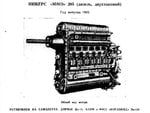davebender
1st Lieutenant
Do-26 weighed approximately twice as much as Ju-86 and had twice as many engines. I'd hazard a guess Do-26 would cost roughly twice as much to mass produce. Do-26 also required a seaplane tender with large catapult to achieve maximum range.
Falke Information

GDP of Soviet Union and their allies was much larger then GDP of European anti-communist nations. Hence German military equipment must be relatively inexpensive to have any hope of producing enough. Building expensive Do-26 seaplanes plus additional Falke class seaplane tenders might work for USA but it won't work for WWII Germany.
Falke Information
GDP of Soviet Union and their allies was much larger then GDP of European anti-communist nations. Hence German military equipment must be relatively inexpensive to have any hope of producing enough. Building expensive Do-26 seaplanes plus additional Falke class seaplane tenders might work for USA but it won't work for WWII Germany.


